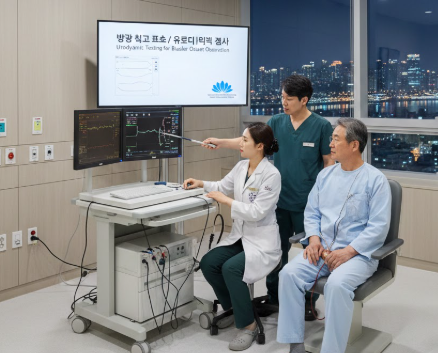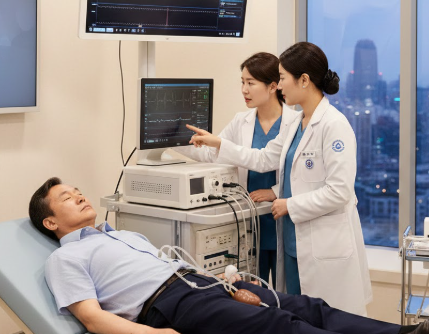Treatment Overview
Focused Minimally Invasive Fibroid Removal in Korea is an advanced surgical program designed to treat uterine fibroids with exceptional precision, minimal surgical trauma, and faster recovery. Korea has become a world leader in this field by combining cutting-edge surgical technology with expert gynecologic care and patient-centered treatment protocols.
Fibroids — benign tumors of the uterine muscle — affect a significant percentage of women worldwide. They may cause heavy menstrual bleeding, pelvic pain, pressure on the bladder or bowel, and fertility challenges. Focused minimally invasive fibroid removal is designed to eliminate these symptoms while preserving uterine health and minimizing recovery time.
Korea’s leading medical institutions, including Samsung Medical Center, Asan Medical Center, Severance Hospital, CHA Bundang Women’s Hospital, and Ewha Womans University Mokdong Hospital, offer this specialized program. These hospitals employ advanced laparoscopic surgery, robotic-assisted myomectomy, ultrasonic guidance, and single-port surgery, all tailored to the patient’s unique condition.
Purpose & Benefits
The primary goal of focused minimally invasive fibroid removal is to provide safe, effective fibroid treatment that minimizes surgical trauma, shortens recovery time, and optimizes patient outcomes. This approach uses the latest technology to focus surgical intervention only where needed, reducing collateral damage to healthy tissue.
Key benefits include:
- Precision Surgery: Targeted removal of fibroids with minimal impact on surrounding tissue.
- Minimized Recovery Time: Less invasive surgery allows patients to resume daily activities sooner.
- Reduced Pain & Scarring: Smaller incisions result in less discomfort and better cosmetic results.
- Preservation of Uterine Health: Surgical methods designed to protect fertility and uterine function.
- Lower Blood Loss: Advanced energy devices and focused surgical techniques reduce intraoperative bleeding.
- Shorter Hospital Stay: Many patients return home within 1–2 days.
- Improved Long-Term Outcomes: Focused removal reduces fibroid recurrence and improves quality of life.
This program reflects Korea’s reputation for surgical precision and patient-centered care, making it a leading choice for women seeking advanced fibroid treatment.
Ideal Candidates
Focused minimally invasive fibroid removal is suitable for women experiencing significant symptoms from fibroids, particularly those who desire quick recovery and minimal surgical impact. Ideal candidates include:
- Women with heavy menstrual bleeding, pelvic pain, or pressure symptoms.
- Patients with single or multiple fibroids requiring precision removal.
- Women wishing to preserve their uterus and fertility.
- Patients preferring minimally invasive surgical approaches.
- Women seeking advanced, tailored surgical care.
Korean gynecologic surgeons perform detailed preoperative evaluations, including ultrasound, MRI, and laboratory testing, to design the most effective treatment plan.
Possible Risks & Complications
While focused minimally invasive fibroid removal is highly safe, patients should be aware of potential risks:
- Bleeding: Uncommon, but possible, particularly in large or vascular fibroids.
- Infection: Minimal risk, reduced with sterile surgical protocols.
- Adhesion Formation: Reduced with minimally invasive techniques but still possible.
- Injury to Surrounding Organs: Rare due to precision surgery and advanced imaging.
- Fibroid Recurrence: Possible, though reduced with thorough removal.
Korean hospitals mitigate risks through expert surgical planning, precise techniques, and structured aftercare.
Techniques Used
Focused minimally invasive fibroid removal in Korea employs a combination of advanced surgical techniques and real-time imaging to ensure accuracy and safety:
- Laparoscopic Myomectomy: Uses small incisions for targeted removal and faster recovery.
- Robotic-Assisted Myomectomy: Offers enhanced dexterity and precision for complex fibroid removal.
- Ultrasonic-Guided Myomectomy: Real-time imaging enables precise localization and excision of fibroids.
- Single-Port Surgery: Minimally invasive method with a single incision for reduced scarring and faster healing.
- Energy-Based Devices: Minimize blood loss and preserve surrounding tissue.
- Precision Suturing: Maintains uterine integrity and fertility potential.
These techniques are adapted to each patient’s needs, ensuring safe and efficient removal with optimal results.
Recovery & Aftercare
Recovery after focused minimally invasive fibroid removal is faster and more comfortable compared to traditional open surgery. Most patients return to normal daily activities within 1–2 weeks.
Aftercare typically includes:
- Postoperative evaluation and monitoring.
- Pain management tailored to the patient’s needs.
- Guidance on physical activity and nutrition to support healing.
- Fertility counseling for women planning pregnancy.
- Follow-up imaging to monitor recovery and fibroid recurrence.
Korean hospitals place strong emphasis on structured aftercare to support full recovery and ensure lasting results.
Results & Longevity
Focused minimally invasive fibroid removal offers durable relief from fibroid-related symptoms and improves quality of life. Korea’s patient-centered and technology-driven approach ensures high success rates and faster recovery compared to traditional surgery.
Long-term outcomes indicate reduced recurrence rates, improved reproductive outcomes, and higher patient satisfaction.
Treatment Process in Korea
- Initial Consultation: Comprehensive review of symptoms, imaging results, and reproductive goals.
- Preoperative Planning: Customized surgical approach based on detailed fibroid mapping.
- Surgical Procedure: Minimally invasive, focused fibroid removal using advanced technology.
- Postoperative Recovery: Structured care program to optimize healing.
- Follow-Up: Ongoing monitoring and consultation to ensure uterine health and patient satisfaction.
Korean hospitals ensure this process is efficient, precise, and designed for the patient’s comfort and safety.
Cost Range
Costs for focused minimally invasive fibroid removal in Korea vary depending on the technique and hospital:
- Laparoscopic Myomectomy: ₩4,000,000 – ₩7,000,000 KRW ($3,000 – $5,200 USD)
- Robotic-Assisted Myomectomy: ₩9,000,000 – ₩14,000,000 KRW ($6,800 – $10,500 USD)
- Ultrasonic-Guided Myomectomy: ₩7,000,000 – ₩12,000,000 KRW ($5,200 – $9,000 USD)
- Single-Port Surgery Packages: ₩8,000,000 – ₩15,000,000 KRW ($6,000 – $11,300 USD)
These costs reflect Korea’s advanced surgical capabilities and patient-focused care.
Popular Clinics for Focused Minimally Invasive Fibroid Removal in Korea
- Samsung Medical Center – Leaders in precision minimally invasive surgery.
- Asan Medical Center – Specialists in robotic-assisted and laparoscopic fibroid removal.
- Severance Hospital – Known for fertility-preserving fibroid surgery.
- CHA Bundang Women’s Hospital – Experts in customized minimally invasive approaches.
- Ewha Womans University Mokdong Hospital – Integrates advanced surgical technology with patient-focused care.




